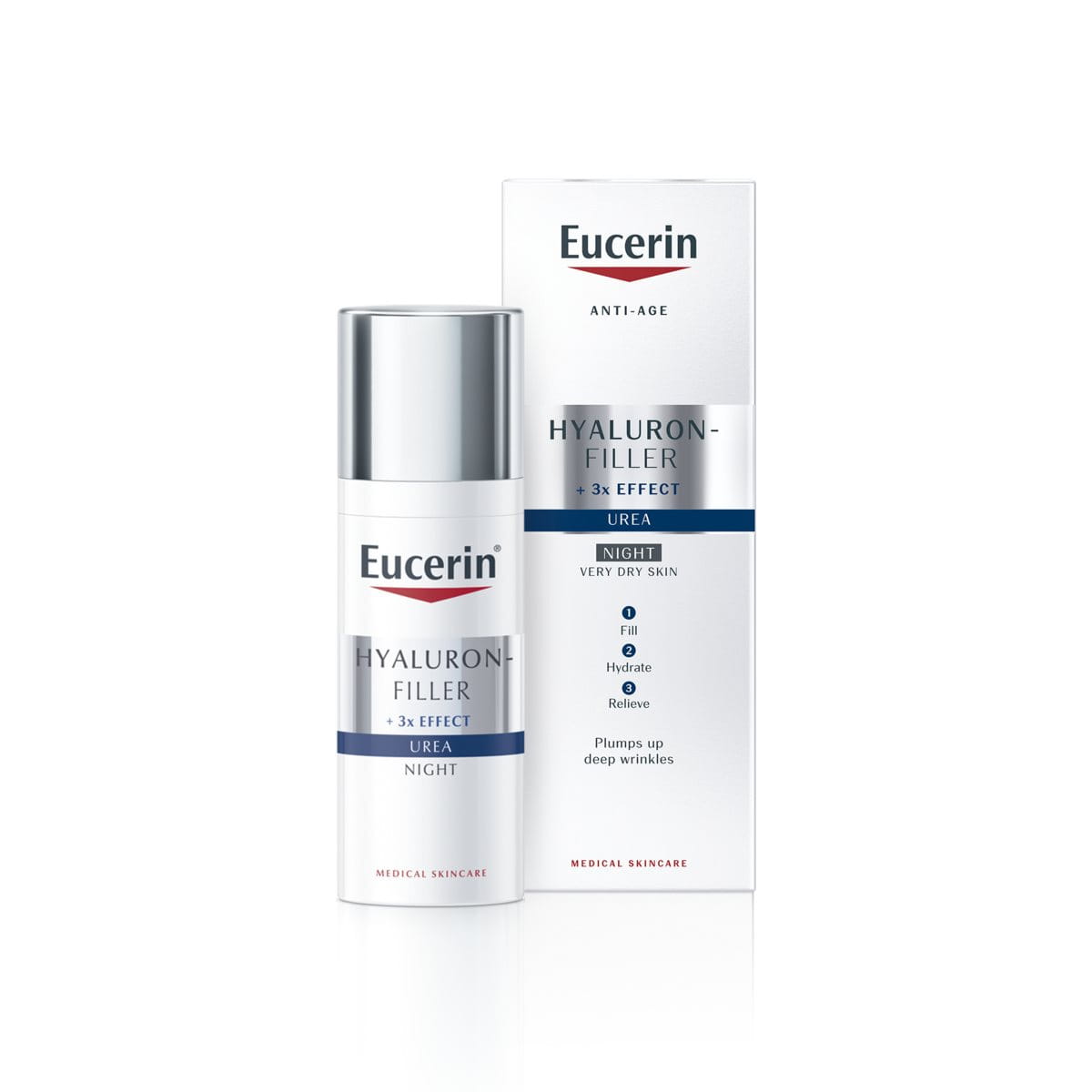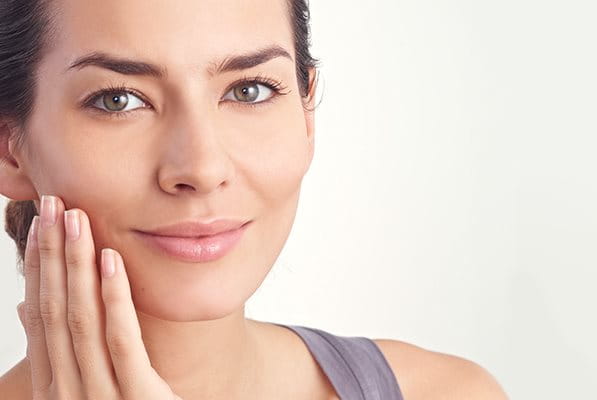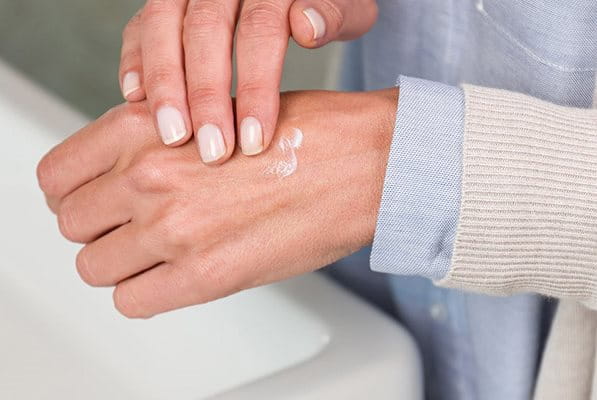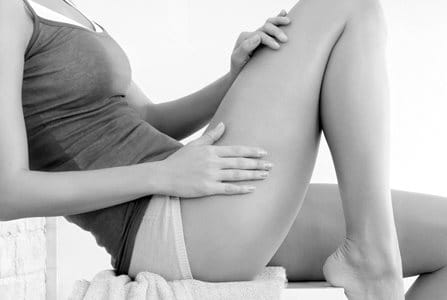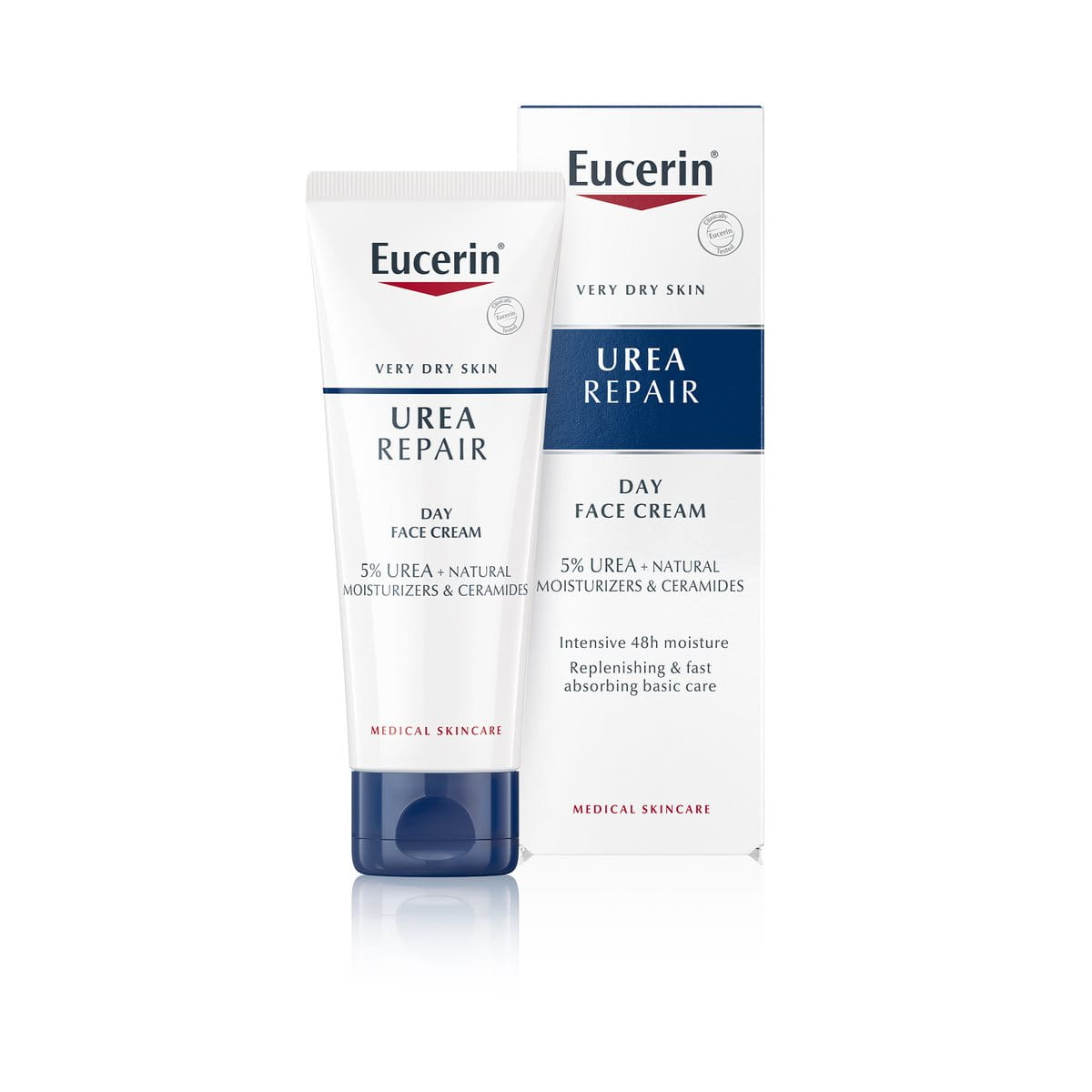Sometimes the ageing processes within the skin will cause the skin type itself to change over time, and with it the way the skin looks and feels. In the case of age-induced skin dryness, this includes increasing feelings of tightness and dryness occurring at the same time as the appearance of fine lines and wrinkles. These dual changes mean that the way the skin is cared for needs to be re-evaluated: to keep it healthy, feeling comfortable and to minimise the visible signs of ageing.
Signs & Symptoms
How to identify age-induced dryness
Age-induced dryness is a concern that becomes more noticeable and may need more management with passing time.
It can affect any of the four main skin types. All of the skin types have the potential to move towards being drier with age. Although not always the case, increasing dryness is a common process of general skin ageing.

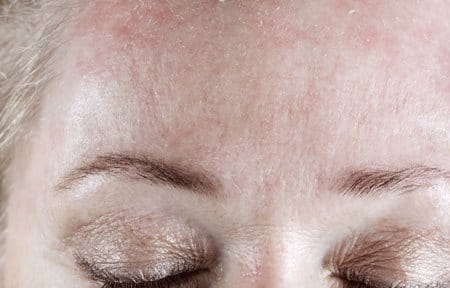
Skin dryness and skin sensitivity are often linked and can be concerns at the same time. As time passes, the dryness that accompanies sensitivity can worsen and become age-induced dryness.
How age-induced dry skin feels
Over time, the skin may feel increasingly dry and tight. Moreover the characteristics of dry, ageing skin can be:
- Roughness
- Chapping with a tendency to formation of rhagades
- Callus formation/scaling
- Frequently itching
How age-induced dry skin looks
Alongside the increasing feelings of dryness, tiny cracks and wrinkles start to become noticeable on the surface of the skin. These gradually get deeper over time, and increase in number.
Causes & Triggers
What makes skin drier with age?
Age-induced dryness is caused by a combination of internal and external factors that have an increasing influence on the skin as years pass.
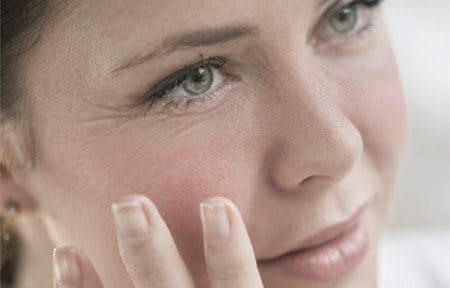

After the age of 25 the skin metabolism slows down. By the third decade of life, the skin has begun to change. This chronological skin ageing is inevitable. It is caused primarily by physiologic alterations to the functionality of the skin. In this case, the skin becomes gradually drier and less elastic over time.
Barrier function is weakened, contributing to a loss of moisture. With this vital function of skin compromised, it is now less able to protect itself against the external factors that accelerate age-induced dryness further.
The metabolic system within each cell slows. Increasingly, skin loses moisture and becomes less elastic. Dry facial skin and wrinkles follow. It is these dual affects becoming apparent on the skin’s surface that show evidence of age-induced dryness.
Genetic predisposition and ethnicity can make a difference to the speed at which a person’s skin ages and the effects of age-induced dryness become apparent.
As life progresses, hormonal changes will also have an impact. With the onset of the menopause a drop in estrogen levels may slow the production of elastic fibres.
What happens in the layers of the skin?
- The horny layer
It is made up of tightly packed keratinocytes and substances that together are known as the natural moisturising factor, or NMF. These substances give this layer the ability to bind water. In young skin, an efficient horny layer stores between 10 and 20% of the entire body’s water.
As the skin ages, the horny layer is effected by slowing processes within the skin and external factors compromising its barrier function. It can no longer hold moisture in the skin as effectively. The result is dryness, and the subsequent appearance of wrinkles. - Dermal layers
The structure of the skin is compromised and deeper wrinkles are more likely to show. Elasticity and skin density is reduced, skin looses its youthful look. - Subdermal layers
In these deeper layers, the lipid-storing cells get smaller and are reduced in number.
Read more about skin´s structure, or about other visible signs of ageing and their causes such as wrinkles, loss of volume or loss of density and radiance.
Solutions
How to tackle age-induced dryness
Establish a good skin care routine
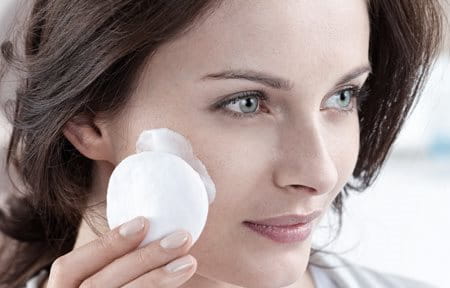
Any type of dry skin needs a careful skin care routine in order to improve appearance and feel. Dry skin may react much more sensitively to soap and alkaline solutions like those found in many cleaning agents. Therefore cleansing should be carried out with a product that is gentle and doesn’t strip the skin of any moisture. Look for formulas that are free of fragrances and colours such as the Eucerin DermatoCLEAN range.
During the care stage it may be helpful to use skin care products that contain the following active ingredients. Those are particularly effective when addressing age-induced dryness:
Active Ingredients
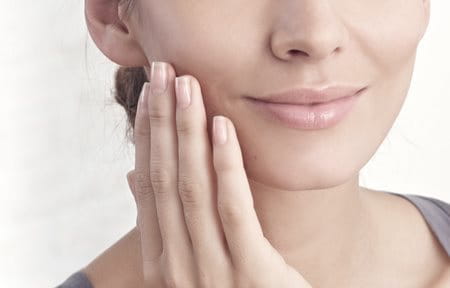
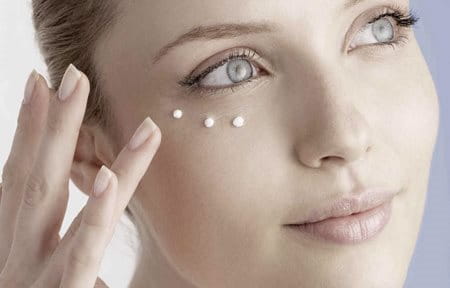
Urea
Urea is one of the natural moisturising factors, NMF, which is naturally manufactured in the body. This makes it ideal for treating dryness. Urea is a key ingredient across all products of the Eucerin Urea range.
Hyaluronic Acid
Also naturally occurring in skin, Hyaluronic Acid has high water binding capacities. It improves skin regeneration and enhances the diffusion of nutrients. It is the effectiveness of Hyaluronic Acid on both dry skin and wrinkles that makes it particularly useful against age-induced dryness.
These two active ingredients together create an extremely effective solution for age-induced dryness. Combined they are found in the formula of the Eucerin Hyaluron-Filler + Urea range.
Ceramide-3
It naturally supports the regeneration of the skin’s barrier and reduces the lipid deficiency. Ceramide-3 is part of the formula of Eucerin Hyaluron-Filler + Urea Night.
Avoiding contributing factors
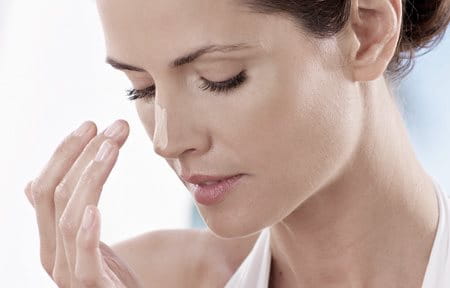

As with dry and very dry facial skin, it is important to avoid anything that will dry the skin further. There are also lifestyle tweaks that can help to slow the onset on age-induced dryness.
Extremes of climate should be avoided. Very hot, cold or dry air can upset the moisture balance of the skin.
There are both positive and negative effects of sun exposure. UV radiation should be managed by avoiding the sun in the hottest hours of the day and wearing loose protective layers of clothing. Use of appropriate SPF products should fit in with this holistic approach. Read more about how the sun affects your skin.
Chemical influences such as cleansing products that are too aggressive, or washing the face with water that is too hot should be avoided as they can cause the skin to dry out further. This happens when the natural moisturising factors, NMFs of the skin are removed, leaving it vulnerable and prone to moisture loss.
Nutrition can help to slow the process. A diet rich in anti-oxidants can minimise the affect of oxidative stress.
Important Information
Whenever you are unsure about your skin condition, please seek for professional advice.
Read more about
Our brand values

We deliver a holistic dermo-cosmetic approach to protect your skin, keep it healthy and radiant.

For over 100 years, we have dedicated ourselves to researching and innovating in the field of skin science. We believe in creating active ingredients and soothing formulas with high tolerability that work to help you live your life better each day.

We work together with leading dermatologist and pharmacist partners around the world to create innovative and effective skincare products they can trust and recommend.



